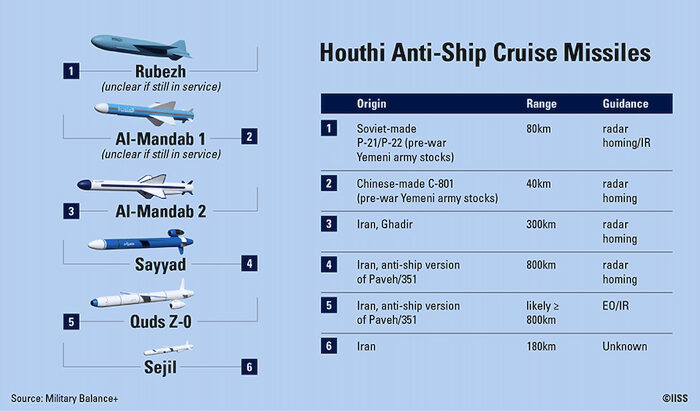Yep. The Houthis are moving their missiles and drones around in the same fashion that all of the Bowler hatted, wool-coat wearing, Pierce Brosnan look-alikes are doing as they run around the museum exchanging fake briefcases. In the same fashion that the police were frustrated in trying to arrest Brosnan and prevent the theft of a piece of art, the U.S. and U.K. keep launching airstrikes at sites where they think the mobile missile platforms are and still cannot stop Yemen from launching more missiles.
Tiny Yemen is frustrating the world's self-professed "greatest" military power in the world.
This would be hilarious were it not for the fact the U.S. and U.K are killing people with no certainty that they are responsible for the actual launch of missiles. The Western world is striving to ignore the purpose behind the Houthi shutdown of the Red Sea — i.e., force Israel to cease killing Palestinians in Gaza. While most world leaders ignore this fact, the Houthi actions are being celebrated by street Arabs and muslims. In other words, a vast sea of humanity. This is a true David vs. Goliath struggle.
Yemen, based on videos of previous military parades, has thousands of missiles and drones. The International Institute for Security Studies reports:
In parades in 2022 and 2023, the Houthis unveiled additional ASCMs, including what appeared to be two anti-ship versions of the Iranian Quds/351 LACM. One version is allegedly equipped with a radar-homing seeker (Sayyad), and the other has an electro-optical/infrared seeker (Quds Z-0). Based on the range of the original Quds and on Houthi statements, both systems could have a range of at least 800 km.This means the United States and the United Kingdom will be embroiled in a lengthy, costly campaign with no guarantee of success. Fear of depleting U.S. Naval supplies of air defense missiles is the reason the U.S. is relying on fixed wing aircraft to deliver bombs. The U.S. is being very sparing about using Tomahawk cruise missiles because the inventory is being rapidly depleted:
The parades also featured a variety of anti-ship ballistic missiles (ASBMs) and guided rockets employing Iranian infrared or imaging infrared seeker technology. The 450 km-range Asef appears to be a rebranded ASBM version of Iran's Fateh 313 missile, while the Tankil represents a previously unseen anti-ship version of the IRGC-developed 500 km-range Zohayr. The two designs constitute the heaviest Houthi anti-ship missiles, both with warheads of more than 300 kilograms, and are of Iranian origin.
Three smaller ASBMs - the 140 km-range Faleq, the Mayun and the Bahr al-Ahmar - strongly resemble Iranian design philosophy and seeker technology but do not precisely match known Iranian systems. They could either be Iranian systems not observed before and smuggled to Yemen, or Houthi-produced rockets combined using Iranian guidance kits, not unlike developments made by another Iran proxy, the Lebanese Hizbullah, in its precision-guided surface-to-surface missile programme. Finally, the Houthis have presented an S-75 (SA-2) surface-to-air missile, likely from pre-war Yemeni army stocks, modified for an anti-ship role using an Iranian guidance kit.
Raytheon builds Tomahawks at a facility in Arizona. Each missile costs the Navy more than $1 million. In 2020 the Navy has around 4,000 Tomahawks. But that number is set to fall as the fleet upgrades some missiles and disposes of others.While this means Raytheon will profit from new USG contracts to build more Tomahawks until an alternative becomes available, the U.S. cannot produce enough cruise missiles to sustain a rate of fire that uses up 20 missiles a week. DOD also has to keep a reserve for contingencies in Iran and China. The United States is like the Big Bad Wolf huffing and puffing at the brick house. For all of its bluster it cannot close the deal and shutdown Yemen.




Jeezus H.
Would you buy a used Houthi anti-ship cruise missile from this man?